






Dear seafarers,
Not for the first time in Wavelength, the focus is firmly on the human element of the shipping industry in this issue. While there is general agreement that emerging technologies are likely to impact human contribution in the majority of sectors, there is evidence within the shipping industry that seafarers, with their extensive knowledge and skills, are indispensable in almost every aspect of maritime activity. The theme of the importance of seafarers begins with the Technical article’s topic of onboard maintenance, and how the crew’s meticulous monitoring of equipment on deck together with timely interventions to prevent damage are fundamental to the continuous smooth operations of a vessel. The Marine Operations submission points out that AI and other technological innovations will inevitably enhance safety and efficiency, but cannot replace seafarers.
The Safety First section addresses human error and how seafarers can lower the risk of repeated incidents, which “remain stubbornly high”. (The previously mentioned piece suggests that AI may be of assistance in this area.) In Mental Well-Being, the topic is feelings, which are what make us human, and are often seen as a weak point. In this section, the spotlight is on reducing any potential weakness by identifying the emotions responsible for them and reducing the negative impacts they can have by showing compassion and
displaying empathy.
As you will see in other articles, there is a link that emerges between our Shore Staff and our Seafarers which has resulted in mutual respect, trust and appreciation. This connection that the Company has nurtured also applies amongst our staff in the Athens office, as evidenced in the Introducing our Shore Staff section, and amongst our Seafarers, as illustrated in Voices from the Fleet and elsewhere. These connections have served to strengthen bonds within the human element of the Company, thereby establishing a culture conducive to the creation of an excellent work environment.
I would like to thank all the contributors to this issue. You have all submitted pieces that reflect your passion for your work, your acknowledgement of your colleagues’ support and abilities as well as your appreciation of the way the Company operates and the opportunities it offers.
I sincerely hope you enjoy this issue of Wavelength. If you have any comments, suggestions or questions regarding the content, please do not hesitate to contact me at contact@wavelength.gr.
Best

We are thrilled to announce that our basketball team has secured in the Shipping Basketball League! This prestigious tournament featured 24 teams, divided into three competitive divisions, and our team proudly competed in the third division. Despite tough competition, we rose to the challenge, demonstrating exceptional skill, unity and determination throughout the competition. A special mention goes to our incredible supporters – the

true 6th player on the team. Our colleagues, who cheered us on from the stands, provided the energy and spirit that fuelled us on court. Their unwavering support and enthusiasm made a significant difference, motivating us to push harder and aim higher.
Looking ahead, our team is already preparing for the 20242025 season with one clear goal: to defend our title and win back-to-back championships. We are ready for the challenge and are looking forward to continuing our journey of success. Congratulations to everyone who contributed to this achievement.

to replace or otherwise contradict the detailed instructions and procedures issued by the owners, managers, flag etc. The articles presented and the views expressed in the bulletin do not necessarily reflect those of the publishers. Editor: Nicholas Seaman • Email: contact@wavelength.gr • Design-Production: www.remdesign.gr
In the second quarter of 2024, there were forty one promotions, which matched the number reached in the fourth quarter of 2023. The list of those ratings and officers who were promoted along with their vessels and promotion details in chronological/alphabetical order appears in the table below.
LAROGA Roirejie NAMRATA 4/E to 3/E
PAGENTE Lhendon CORAL ISLAND D/Tr. to OS
CERBAS Nichoh CE-BERMUDA E/Tr. to WPR
ESPANOSA Anthony Ryan DANAE 2/M to C/O 12.05.24 ARMADA Arvy Jan DINO E/Tr. to WPR 19.05.24 VINCENT Darren PSERIMOS WPR to ASE 24.05.24 DUENAS Robin COSTAS P. E/Tr. to WPR 28.05.24 CARMONA Christian NAMRATA D/Tr. to OS
31.05.24 RAMOS Danilo CAPTAIN A. STELLATOS E/Tr. to WPR
01.06.24 CABUAL John Vincent NILOS E/Tr. to WPR
01.06.24 SONISO Danny NILOS WPR to ASE
01.06.24 STEPANENKO Serhii APANEMO FTR to 4/E
07.06.24 REUYAN Reswin EVGENIA P. ASD to 3/M
11.06.24 POKYN-CHEREDA Serhii DINO APR/ELEC to ETO
13.06.24 ABESAMIS Jayrald NILOS ASE to 4/E
22.06.24 MORENO Ariel APAGEON MMN to STWRD
23.06.24 DUBCHAK Vitalii NAMRATA 4/E to 3/E
25.06.24 MACATANGAY Razel DANAE MMN to STWRD
29.06.24 BANAGA Michael Louisse DINO D/Tr. to OS
29.06.24 BARCARSE John Kyle CE-BERMUDA D/Tr. to OS
Of the forty one shipboard personnel promoted, two have reached the top rung of the ladder. More specifically, Franklin Lagamon and Terence Ike Mates aboard M/V Danae and M/T Alexia respectively have become Chief Engineers. These two promotions bear testament to the success of the Company’s policy of promoting from within, which highlights the value placed upon loyalty and commitment. Two other promotions that also lend credence to the advantages of having such a policy are those of newly appointed Chief Officers Alok Subdi and Anthony Ryan Espinosa.
All of our Seafarers on the list deserve the warmest congratulations on their advancements. Moreover, they should always remember that along with their promotions comes immense respect for their ability to perform their duties to a consistently high level.

The condition of the Main Deck is the first impression of the vessel for anyone who goes on board. However, the proper maintenance of the Main Deck along with the equipment and outfitting on it contributes to a lot more than just the cosmetic appearance of the vessel. Maintenance on deck plays a pivotal role in ensuring safety, structural integrity, operational efficiency, and regulatory compliance. Deck outfitting refers to the equipment and structures fitted on a vessel’s Main Deck and are designed to facilitate operations and enhance safety like air vent heads, piping and pipe supports, railings, access platforms, ladders, lifeboats, windlasses, winches and fire hydrants.

The Main Deck and the equipment fitted on it are constantly exposed to harsh environmental conditions like salt water hammering, extreme weather conditions and heavy mechanical loads that accelerate their corrosion and wear. Without proper maintenance, they can deteriorate quickly, leading to safety hazards and operational difficulties.
The main equipment and machinery fitted on the Main Deck include:
- Windlasses and Mooring winches used for safe mooring alongside at ports or anchoring the vessel
- Cargo Cranes fitted on tankers used for handling cargo hoses, and on some bulk carriers for loading and unloading cargo
- Hatch Covers fitted on bulk carriers that guarantee the water tightness of the cargo during transportation
- COW machines, heating coils steam manifolds, tank level gauging radar domes, P-V valves, inert gas system components like the vacuum breaker and deck seals on tankers that are used for various cargo operations

and cargo handling
- Air Vent Heads that allow for the safe ventilation of tanks, preventing dangerous pressure build-ups while protecting the tanks from sea water ingress
- Access equipment like ladders and gangways that provide safe access to bow and access hatches
- Lifeboats and Davits that are ready to be used in case of an emergency evacuation of the ship
- Fire hydrants and foam guns used for firefighting on deck
- Piping of equipment like hydraulic pipes, the main fire line and cargo lines, each of which plays a vital role in the overall safety and functionality of the vessel
Therefore, regular maintenance is essential for the safe operation of the ship throughout its lifetime.
Proper maintenance of deck equipment and outfitting is first and foremost a matter of safety of the vessel and the crew on board. Properly maintained deck outfitting ensures that all systems are functioning as intended, reducing the risk of accidents.
For instance, a well-maintained mooring system prevents the ship from drifting away from the dock, which could cause collisions or other dangerous situations. An improperly maintained and greased mooring wire could snap causing serious injuries or fatalities among the crew and compromise the safe mooring of the vessel. Likewise, improperly maintained air vent heads can result in blockages, leading to overpressure or vacuum within the tank. This can cause structural damage to the tank or lead to the ingress of seawater, contaminating the content of the tank e.g. lube oil or fresh water.
A lack of the proper maintenance of lifeboats and their davits can lead them to fail during an emergency, putting the crew at even greater risk. Similarly, neglecting the maintenance of fire hydrants and the fire line on deck can lead to leakages, which can compromise the firefighting capability of the vessel during an emergency.
In everyday operations, accommodation ladders and pilot ladders are used every time someone embarks or disembarks from the vessel. The proper maintenance, greasing and storage of this equipment ensures the safety of the people who use them.

If the hydraulic piping on deck is not properly maintained, then a leakage of hydraulic oil under pressure can occur, harming anyone in the proximity and causing operational problems in the hydraulic equipment i.e. mooring winches and hatch covers. The maintenance of piping supports is also important as these are usually small pieces prone to corrosion and thinning down. If they are not well maintained, then the pipelines they support can fail under the stresses that are developed on the hull during sailing.

The maintenance of cargo lines on tankers is also essential to prevent oil spillages on deck during cargo operations and possible sea pollution events.

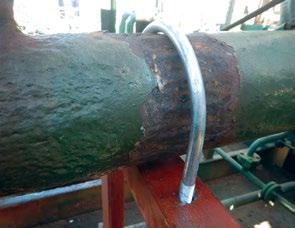


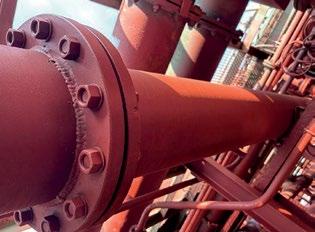
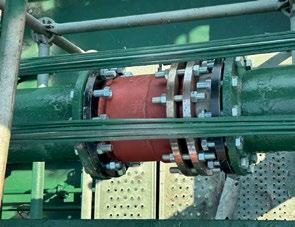
Deck plating and the supports of various equipment on it should not be neglected either. Frequent derusting and proper painting of the deck plating and steel structure protect them from the corrosive environment and contribute to the preservation of the required thickness of the steel plates and consequently, in both the local and the longitudinal strength of the vessel. This is particularly relevant in Chemical/Product tankers, where the stiffeners are fitted on the exposed deck, and the maintenance is of outmost importance because of the complexity of the structure. The deck maintenance done during the repairs and drydocking of these vessels has to be continued by the crew while the vessel is sailing in order to avoid costly repairs and difficult steel renewals on the vessel, which could delay the completion of repairs and keep the vessel from resuming her trading operations.

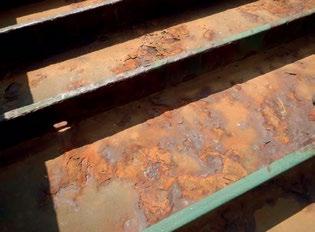

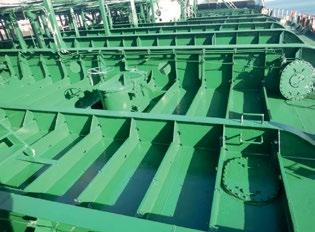



Beyond safety, regular maintenance of deck outfitting is key to operational efficiency. A well-maintained ship can operate at peak performance with fewer delays caused by unexpected breakdowns and failures. For example, well-maintained mooring equipment leads to efficient mooring operations that reduce turnaround time in port and allow the ship to stick to its schedule and avoid costly delays. On the other hand, if the deck outfitting is not well maintained, then several operational problems may occur. For example, if the air vent heads are not cleaned and inspected regularly, they can get blocked, which may lead to tank overpressure and subsequently structural damage to the tank, resulting in costly repairs and a significant delay in operations. The primary purpose of a vessel is the loading, transferring and unloading of cargo. Properly functioning cargo handling systems speed up the cargo operations, improving the overall logistics efficiency. Hatch covers, cargo cranes and grabs for bulk carriers and hose handling cranes, cargo piping and cargo valves for tankers are of the outmost importance for the efficient operation of a vessel. If these systems fail during operation, it could cause significant delays that not only disrupt schedules but can also lead to financial losses. For example, a corroded valve block of the Hose Handling Crane may fail during operation causing operational delays.

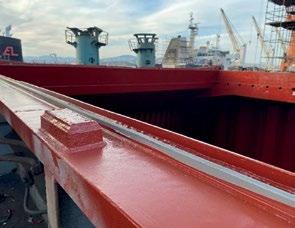




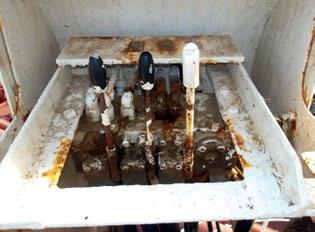
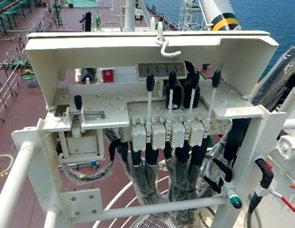
Structural integrity and operational efficiency are closely tied to the vessel’s ability to comply with international and regional regulations. International conventions like SOLAS and MARPOL include statements regarding the regular inspection and proper maintenance of safety equipment like lifeboats, fire-fighting equipment and marine pollution prevention systems.
Classification societies develop and enforce standards for the construction and maintenance of ships. These standards cover everything from the structural integrity of the vessel to the condition of its equipment, including deck outfitting. For instance, IACS Unified Requirements (UR) set forth specific criteria that must be met to ensure that a ship's deck outfitting is safe and effective. During Class surveys, the Class surveyors verify that ships comply with the standards at the time of inspection. Continuous maintenance, therefore, falls under the responsibility of the crew, who must ensure that the ship remains in compliance with these standards between inspections. Ships that fail to meet the required maintenance standards are likely to receive recommendations from the Class or Short-term certificates, depending on the severity of the observation.

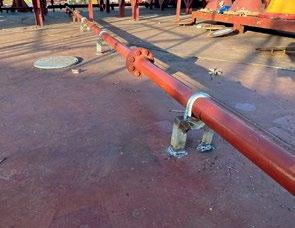


Port State Control (PSC) inspections are another enforcement mechanism of international regulations which ensure that the vessels comply with safety, security and environmental standards. PSC inspections are conducted by maritime authorities on ships that enter territorial waters and their purpose is to identify deficiencies that could lead to accidents or environmental damage. During these inspections, PSC officers examine various aspects of the ship, including the condition of the Main Deck, the outfitting and equipment on it. The condition of the Main Deck is the first impression that any surveyor or inspector gets when they board the vessel and it can affect whether they will be positively or negatively disposed towards the vessel overall.
Ships that fail to meet the requirements of the PSC inspectors can incur PSC inspection reports with recommendations or even be detained in the worst case scenario, and be forced to remain in the port until the deficiencies are corrected. The financial and operational impact of a detention can be significant; it can lead to delays in cargo delivery, potential fines and increased scrutiny from other ports and maritime authorities. Additionally, a detention record negatively affects the Company’s reputation, leading to a loss of business.
As per the latest ABS Port State Control Quarterly Report for Q2 2024, the top categories for grounds for detention on ABS vessels were the following:
- ISM
- Evaluation of crew performance (fire drills)
- Maintenance of the ship and equipment
- Fire prevention structural integrity
- Fixed fire extinguishing installation
- Covers (hatchway-, portable-, tarpaulins, etc.)
- -Ready availability of firefighting equipment
As regards the United States Coast Guard (USCG), the top categories for grounds for detention were the following:
- Maintenance of the ship and equipment
- Ready availability of firefighting equipment
- Oil accumulation in Engine Room
- Steering gear
As per the ABS Port State Control Annual Report 2023, the top 10 detainable deficiencies for the Tokyo MoU were as follows:



Maintenance of the ship and equipment holds third place with 177 vessels being detained on these grounds in 2023. Ventilators, air pipes, casings hold second place with 179 vessels detained, Lifeboats are in fourth place with 166 vessels detained and Fixed fire extinguishing installation are in fifth place with 154 vessels detained and so on.
It is, therefore, evident how important the proper maintenance of the deck is along with the outfitting and the safety equipment on it for the safety, operation, reputation and documentation of the vessel. For seafarers, this means that maintaining deck outfitting to the highest standards is not just about compliance; it’s about ensuring the smooth and efficient operation of the ship, avoiding unnecessary delays, and protecting your livelihood.
Seafarers are on the front lines of maintaining compliance with classification society guidelines. Their responsibilities include:
- Regular Inspections: Conducting routine checks of all deck outfitting equipment to identify potential issues, checking for signs of wear, corrosion, or damage, verifying the proper operation of all equipment and ensuring prompt replacement of any worn or damaged items
- Timely Repairs: Ensuring that any identified deficiencies are promptly addressed, either by the crew or by calling in specialized repair services so that worn parts are promptly replaced
- Documentation: Keeping detailed records of maintenance activities, including inspections, repairs, and replacements can prove beneficial during thirdparty inspections.



The best way to identify potential problems is to prevent them before they occur. In the spirit of “preventive maintenance”, there are several preventive measures that the crew on board can take in order to safeguard the vessel against damage to deck equipment and outfitting and any unwanted implications. The best way to protect the deck structure against corrosion and thickness diminution is protective coating. Frequent derusting and proper painting of the exposed surfaces will prolong
the lifetime of the equipment and structures, protect against mechanical failure and prevent the need for steel renewal repairs. For the machinery and moving equipment on deck, apart from proper painting, proper greasing and lubrication is the best protection against environmental wear and mechanical failure. This is particularly important for windlasses, mooring winches and cargo cranes, equipment that is hard to repair in case of damage during the operation of the vessel. Special attention should be given to air vent heads, equipment that is frequently checked during inspections. They should be free from obstructions, with clean filters and intact seals to prevent leaks and ensure proper ventilation.
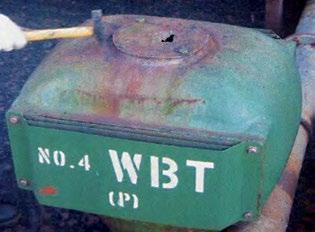


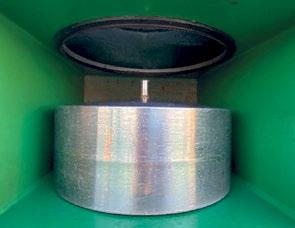
Data from Port State Control reports can provide valuable insights into common issues observed across different vessels, helping the crew to anticipate and address similar problems.
Maintaining deck outfitting is not the responsibility of a single crew member but a team effort that involves the entire crew. Effective communication and collaboration among crew members is essential if high safety standards are to be met.
As a seafarer, it is your responsibility to ensure that the ship's deck outfitting is maintained in accordance with the guidelines set by international regulations. This includes conducting regular inspections, reporting any defects or issues, and ensuring that repairs are carried out promptly. By adhering to these guidelines, you help to ensure the safety of the vessel, its crew, and its cargo.
The maintenance of deck outfitting is not just a matter of compliance with regulations; it is a critical aspect of ensuring the safety and efficiency of maritime operations. As seafarers, your role in maintaining this equipment cannot be overstated. Regular maintenance by the crew prevents accidents, reduces the risk of costly detentions, and ensures that the ship remains in good condition, ready to meet the demands of international trading. The proactive maintenance of deck outfitting is not just about compliance with regulations. It’s about protecting lives, preserving the marine environment, and ensuring the ship's long-term operational success. By prioritizing maintenance, seafarers play a vital role in keeping the seas safe for everyone.

AI is already revolutionizing most industries across the globe and shaping the world as we know it, having the potential to improve our lives in countless ways.

Ai is a machine’s ability to perform the cognitive functions we associate with human minds such as perceiving, reasoning, learning, interacting with an environment, problem solving, and even exercising creativity. Artificial Intelligence (AI) works by simulating human intelligence through data collection, the use of algorithms, data analysis and computational power.
Similarly, the nature of the Maritime Industry has over the years been transformed as technology has been introduced, paving the way for Artificial Intelligence to be adopted in shipping. AI in the Shipping Industry is being used to streamline operations and implement improvements in navigation as well as route optimization. Its presence has also been established in the following areas: autonomous ships, fuel consumption, equipment and vessel predictive maintenance, port density and traffic, cargo management, supply chain and logistics

optimization, safety and security, environmental monitoring, port operations, risk management, crew training and assistance, communication systems, customs and compliance, market analysis, naval architecture, shipbuilding and alternative fuel sources. The list is almost never ending.
AI based systems monitor data from various sources to provide real-time data analysis, supporting current decisions, predicting future patterns and releasing automated alerts to minimize risk and help avoid potential future hazards. This assists in situational awareness in the office and on board vessels.
As the maritime industry continues to grow and evolve, incorporating artificial intelligence and autonomy in shipping operations has become increasingly important as companies strive to remain competitive and innovative. AI enabled autonomy allows us to tackle challenging problems, exceed conventional understanding and think outside the box.
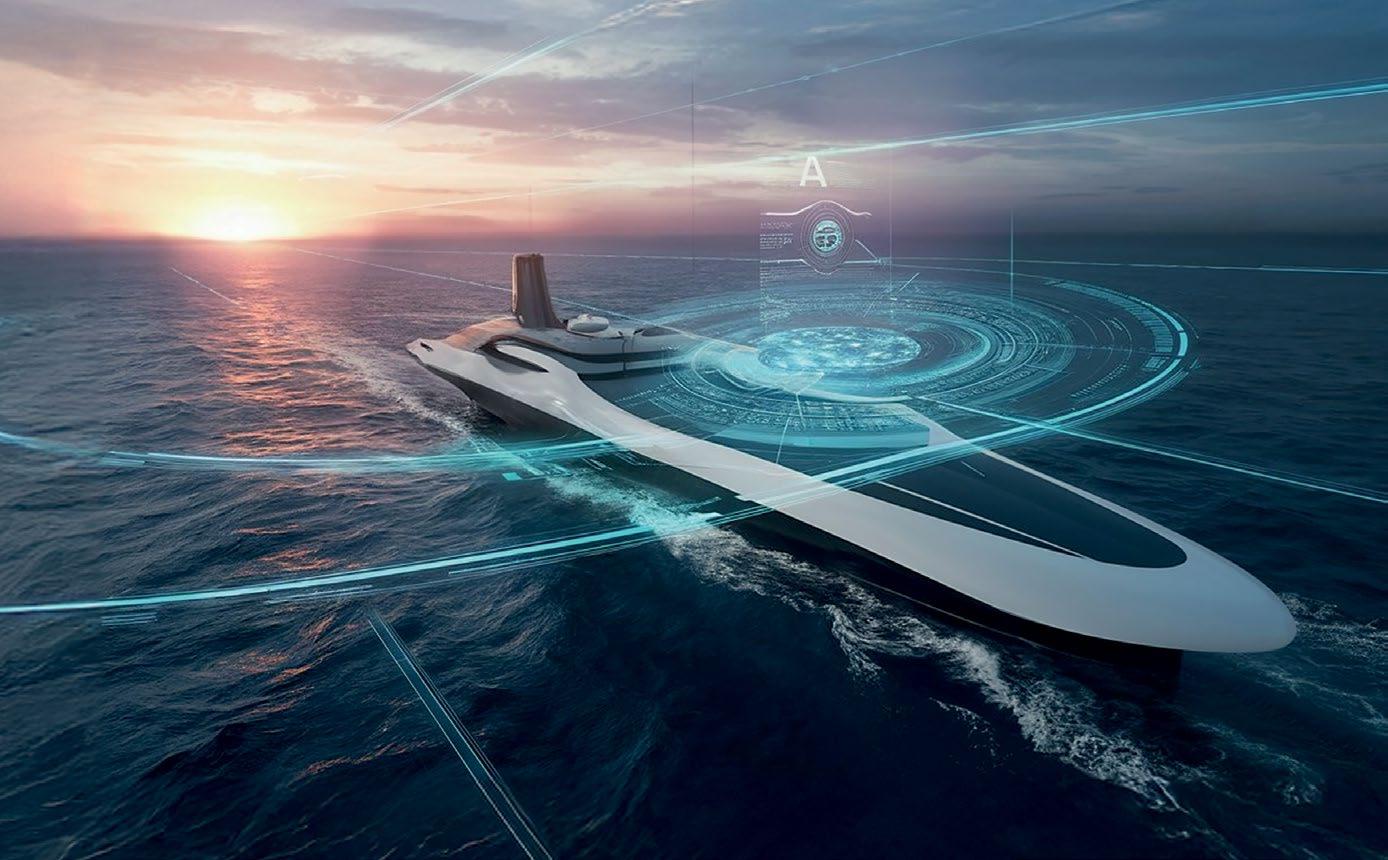

The benefits of AI include contributing to increased efficiency and accuracy, reduced costs, support of safety and environmental sustainability and the elimination of human error. Autonomy offers a range of optimizing opportunities across resources by adapting assets, technology, ships and people to meet the required needs; workload, by reducing repetitive, monotonous tasks and crew optimization by ensuring humans have the right skills and working environment to carry out their jobs in the best manner.
As the development of AI at sea continues to accelerate, we are getting closer and closer to autonomous ships, vessels that are capable of navigating, performing various tasks and making decisions on their own through the use of various technologies, including sensors, cameras, GPS, and artificial intelligence (AI) without the need for human intervention.
As with any transformative technology, the integration of AI into shipping contains both benefits and challenges. Although it promises and has a high potential for great achievements, it is essential that potential risks are evaluated and safe strategies are implemented. As such, it would be prudent to invest in improving the understanding of AI and autonomy through education, to use technology that is appropriate and reliable and to create an independent cross-industry body to support the safe development of AI in the Maritime Sector.
Pertaining to the above, the IMO has established a working group called the “Correspondence Group on Autonomous Ships“, which formulated “Guidelines for the Regulation of Ships using Remote and Autonomous Technologies” (resolution
MSC.428(98)). The IMO has also adopted guidelines for the assessment of marine navigation systems, equipment and arrangements in relation to the safe operation of ships using remote and autonomous technologies (resolution MSC.404(96)).
While some seafarers may see autonomy as replacement, rather than upskilling, there is an opportunity for growth. Although the Maritime Industry is an industry that relies heavily on humans for decision-making, work processing and operations and Artificial intelligence is a powerful tool we use every day to solve complex problems, AI should be seen as an expert assistant, not a decision-maker as some have suggested. Furthermore, automation allows the crew to focus on essential tasks that require their attention and expertise. Becoming more proficient with digital literacy and technology combined with extensive seagoing experience is an irreplaceable combination that will add even more value in the long term.
Despite all the modern advances in information technology and AI, the human element is crucial for shipboard operations. While AI and machine learning can assist with operations, they can only automate so much. Individuals offer unique skills and capabilities that machines cannot replicate nor replace, making the human presence on ships invaluable.
May you always sail through safe and smooth seas!
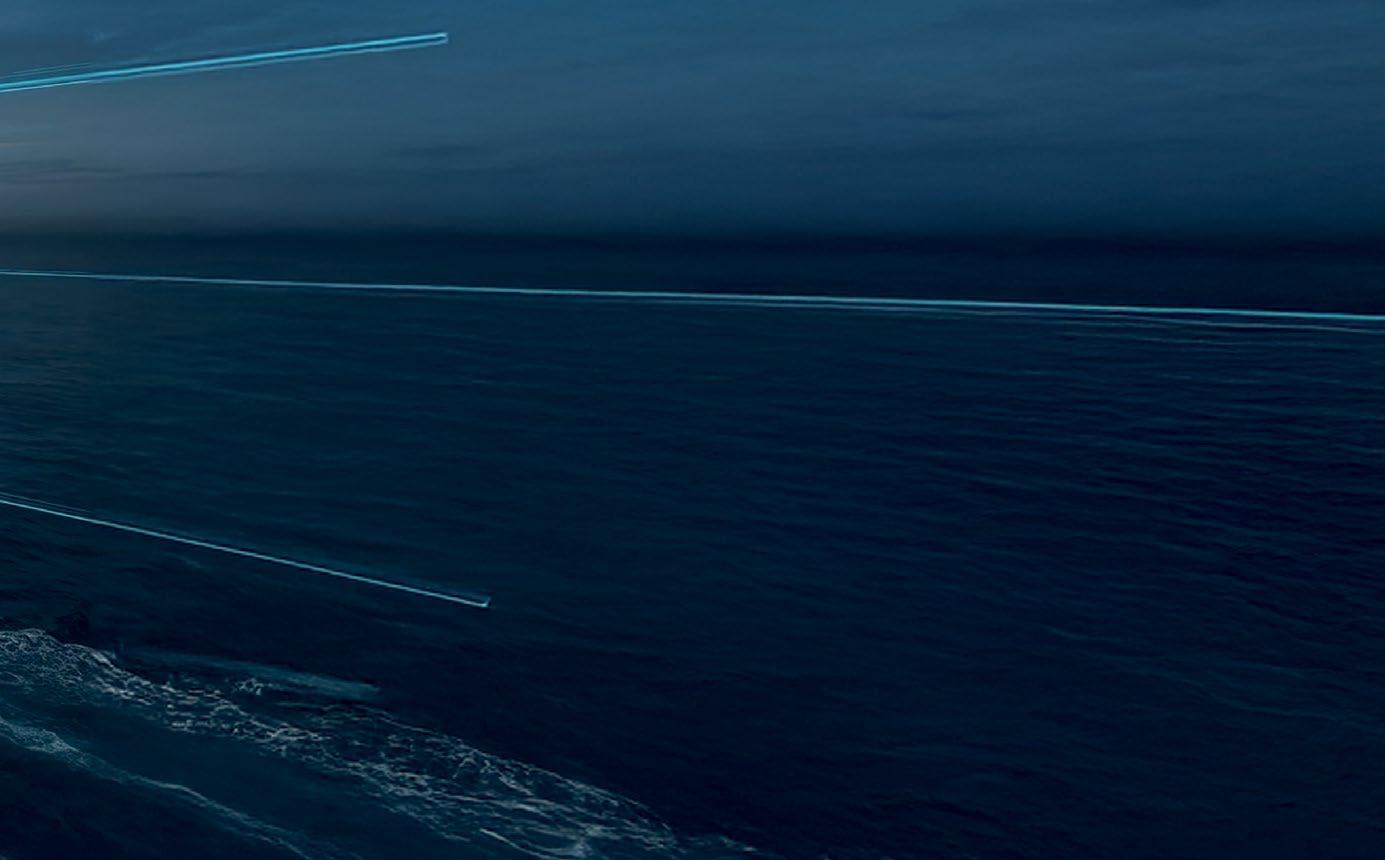
The benefits of AI include contributing to increased efficiency and accuracy, reduced costs, support of safety and environmental sustainability and the elimination of human error.

In August 2024, Cenmar India moved to new premises in Andheri East, Mumbai. It is a modern, much larger space of about 225 square metres which has recently been renovated and upgraded with new IT systems. Cenmar obtained the statutory RPSL approval to operate from the new address.
There are many advantages for the office staff and crew in the new office. These include ample space for daily work, space for training the crew, a conference room and a larger galley. Many pleasant communal spaces are available in the building for short breaks for both staff and crew being prepared to join vessels. The new office is in a location with easy access to banks, medical facilities, an international airport, a metro station and restaurants.

What is more, the transfer of the office to a new space, was accompanied by Capt. Pervez Mirza joining Cenmar. 22 years ago Capt. Mirza was instrumental in setting up CENMAR India.

Now, after 21 years of dedicated work in the Athens office / Marops Department, Capt. Mirza has joined the CENMAR team in Mumbai. His deep knowledge of the industry will be valuable in recruitment and training activities.
We welcome Capt. Mirza in his new role and we thank all Cenmar India staff for the extra efforts they made for the smooth relocation! Cenmar India and Capt. Mirza are looking forward to meeting you in the near future.

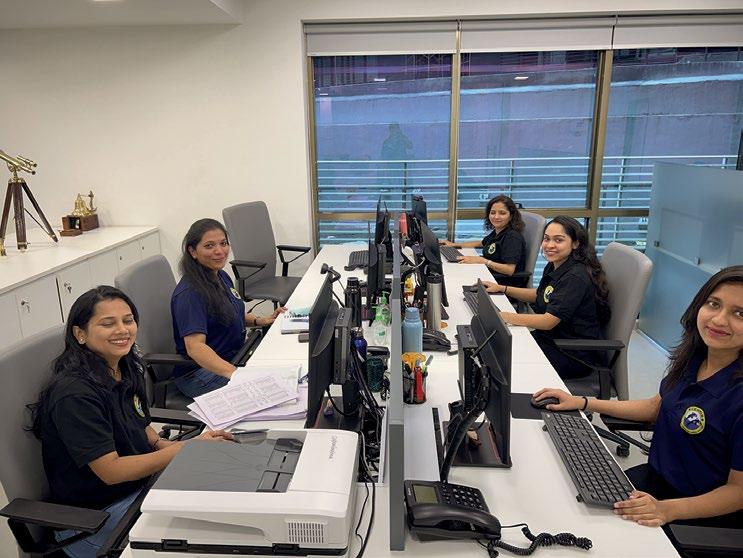


by Chara Markatzinou
On 14th June 2024 we had our first meeting with vessels' Ambassadors to gather feedback on the initial implementation of the Care & Welfare Programme. The meeting was a success, with 20 vessels participating out of 42. The Seafarers appreciated the opportunity to voice their concerns and were pleased to connect with colleagues from other vessels. Overall, the feedback was positive. The seafarers found the programme manual helpful, contributing to good morale and productivity. However, time constraints due to short voyages pose challenges in balancing work and recreational activities. Still, vessels were advised that even five minutes of bonding per day
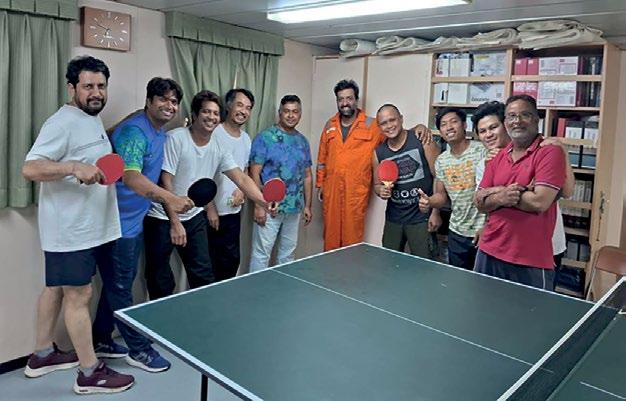


are enough to elevate their mental health. Promoting Seafarers’ lives and thoughts in Wavelength makes them happy and content. Additional requests were voiced and a follow up on the agenda was forwarded throughout the fleet for everyone’s information. The next meeting is scheduled for September 16 2024, with ongoing feedback encouraged as part of our H&S Campaign.


(continued on page 19)
MESSAGE FROM THE DPA:
Dear seafarers,
According to a study, the average person maintains relationships with approximately 150 friends and family. The true cost of a safety incident, therefore, goes far beyond those immediately involved; the injuries and incidents that occur in our industry literally touch millions of lives.
We often state that we put safety first. Our vision is Goal Zero. And this is a vision, because even though we constantly strive for no accidents, we cannot present ourselves as being 100% safe, 100% of the time.
There are many obstacles beyond our control that will cause an incident, no matter how hard we try to prevent it. But at least this should be a low impact incident, without grave consequences. We know we cannot eliminate all accidents, but we are
focusing on taking action on how to learn from past cases and prevent them from happening again.
So, why do we keep experiencing repeated incidents of a similar nature?
This question leads me to bring up the belief that admitting a mistake or pointing out dangerous situations might harm one’s career. On the contrary, the correct mindset should be to view incidents as an opportunity to learn from experience, to dig deep for the real root causes which are most often related to human behaviour. Moreover, when preventive actions are superficial and cannot address all the root causes of an incident, then safety issues are not improved, and the risk of repeated incidents remains stubbornly high.
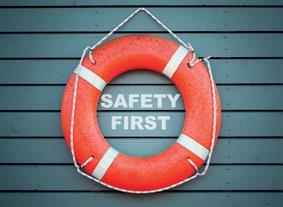

We might not want “repeated” incidents, but I will keep repeating myself to remind you:
- Be the owner of your mistakes so that you can be the owner of your success.
- Abolish the shame of failure.
- Diversity of opinions equals better safety outcomes.
- If you are not actively including, you are accidentally excluding.
- Encourage your team members to Speak Up.
- ASK THE 5 WHYs to get to the root causes, or even more! I wish you safe voyages and a safe return home,
Elli Moretti
Source: Fleet Vessel
While the ship was underway, a crew member noticed smoke in the Crew Smoking Room and promptly informed the Bridge OOW. No flames were visible at any time. The Master initiated the Emergency Response Plan (ERP), and the crew quickly addressed the issue, eliminating the source of the smoke.


The Electrician removed the ceiling light and removed another similar ceiling light to compare the cable connections. During this comparison, he discovered that the ceiling light had been modified to accept a different type of lamp. Unauthorized modifications to equipment can compromise the integrity of safety systems. Although there is no direct evidence linking the modification of the cable connection to the cause of the smoke, it is reasonable to assume that this alteration could have contributed to the ignition. LESSONS LEARNED
- Do not modify equipment using unauthorized material, equipment, or tools!
- Electrical fires are the most devious types of fire. Keep an eye on abnormal condition of cable and wirings and replace them at once.
PHOTOGRAPHIC RE-ENACTMENT OF THE CASE

2nd Cook Eric Mariano who during the time (around 4:40hrs) was off-duty, notices an unusual smell in the Accommodation Area. He immediately informs the bridge.
Duty ASD Jefferson Perez is then immediately sent by the OOW to investigate. He checks the suspected location of the fire.
ASD PEREZ, JOHN JEFFERSON and ASST. COOK MARIANO ERIC.
THE SEAFARERS THAT DETECTED AND QUICKLY RESPONDED TO PREVENT A FIRE
Upon seeing the situation, the ASD immediately informs the duty OOW of the fire, and at the same time he removes the nearest Portable Dry Powder extinguisher.
ASD Perez reports to the Bridge that the fire is out.
As humans, we are emotional creatures. Our emotions influence the decisions we make, the career path we take, the films and music we enjoy, the art we are drawn to. Emotions help us choose our friends, those we fall in love with and stay with for our entire lives… and also those we will leave behind. Yes, emotions have power. Emotional intelligence is the ability to harness that power–to understand and manage emotions so that we can make decisions that are in harmony with our core values and principles. But how do we express our feelings, if we ever do?
Expressing our feelings is a fundamental aspect of human experience. It plays a crucial role in maintaining mental health, building relationships, and fostering personal growth. However, in certain professions like seafaring there is a tendency to keep emotions bottled up. This reluctance to express feelings can have significant consequences for seafarers and their social environment. Understanding the importance of emotional expression and the reasons behind seamen's emotional reticence is essential to addressing this issue.

1. Mental Health and Well-being: Expressing feelings is vital for mental health. When we share our emotions, we release psychological tension, making it easier to process and cope with stressful situations. Suppressing


By Chara Markatzinou
emotions, on the other hand, can lead to increased anxiety, depression, and other mental health issues. Emotional expression serves as a form of emotional release, allowing individuals to confront and understand their feelings rather than being overwhelmed by them.
2. Building and Strengthening Relationships: The open communication of feelings fosters trust and intimacy in relationships. Whether in friendships, family relationships, or romantic partnerships, sharing emotions helps others understand our needs, desires, and concerns. This understanding forms the basis of empathy and support, which are crucial for strong, healthy relationships. When people express their feelings, they create opportunities for connection and mutual support, which strengthens the bond between individuals.
3. Personal Growth and Self-awareness: Expressing emotions is also a path to self-awareness and personal growth. By articulating our feelings, we gain insights into our emotional responses, motivations, and values. This self-awareness allows for better decision-making and personal development. It also helps individuals to set boundaries and communicate effectively, which are essential skills in both personal and professional life.
4. Conflict Resolution: Emotions are often at the heart of conflicts. When individuals express their feelings openly, it can lead to more effective conflict resolution. Instead of letting anger or resentment build up, expressing feelings allows for a constructive dialogue where the root causes of a disagreement can be

addressed. This not only resolves the immediate issue but also prevents future misunderstandings.
5. Stress Relief: Bottling up emotions can cause significant stress. The act of expressing feelings, whether through talking, writing, or creative outlets, can alleviate this stress. It serves as an emotional release, reducing the physical and mental burden of carrying unresolved emotions. Over time, this stress relief contributes to overall well-being and resilience against future challenges.
Despite the clear benefits of emotional expression, seamen often struggle to express their feelings. Several factors contribute to this:
1. Cultural Expectations and Masculinity: The seafaring profession has historically been male-dominated, with a strong culture of toughness and resilience. These cultural norms often equate emotional expression with weakness, particularly among men. Seamen may feel pressure to conform to these expectations, leading them to suppress their emotions to appear strong and capable. This "toughness" is often seen as necessary for survival in the harsh and unpredictable environment of the sea.
2. Isolation and Loneliness: Life at sea is characterized by long periods of isolation from family and friends. This physical distance can make it difficult for seamen to share their feelings, as they lack the immediate support network that others might have on land. The loneliness of the job can exacerbate feelings of isolation, making it harder to open up even when they return home.
3. High-Stress Environment: The seafaring profession is inherently stressful, with long working hours, dangerous conditions, and high levels of responsibility. In such an environment, there is often little time or space for emotional expression. Seamen may prioritize getting through their duties over dealing with their feelings, leading to emotional suppression. Over time, this can become a habit, making it difficult for them to express emotions even when off-duty.

4. Fear of Being Misunderstood or Judged: Seamen may also fear that their emotions will be misunderstood or judged by others, particularly by their peers who share the same demanding lifestyle. This fear can discourage them from expressing their feelings, as they might worry about being perceived as vulnerable or incapable of handling the pressures of the job.
Seamen can learn to express their feelings by adopting several practical strategies that promote emotional openness and wellbeing.
Creating a Supportive Environment: Regular check-ins with fellow crew members can help create a sense of camaraderie and trust, making it easier to share feelings.
Developing Emotional Awareness: Learning to recognize and understand their own emotions can be achieved through mindfulness practices, journaling, or simply taking time to reflect on their feelings. Awareness is the first step toward effective expression.
Seeking Professional Help: Engaging with mental health professionals, whether through onboard counselling services or telehealth, can provide a safe space for seamen to express and process their emotions.
Practicing Communication Skills: Training in emotional intelligence and communication can equip seamen with the tools to articulate their feelings more effectively. This includes learning how to express emotions in a constructive manner and listening empathetically to others.
Using Creative Outlets: Engaging in creative activities such as writing, drawing, or music can be a therapeutic way to express emotions, especially when verbal communication feels challenging.
By adopting these strategies, seamen can learn to express their feelings, leading to better mental health and stronger relationships both on and off the ship.
“Care for your psyche…know thyself, for once we know ourselves, we may learn how to care for ourselves..’’
Socrates

This installment of Nutrition and Physical Health is provided by the Halcyon Clinic. The topic of diets has been extensively researched and highlights the factors that need to be considered prior to dieting.
Today’s healthy eating landscape offers numerous approaches, each promising significant weight loss and improved health. However, while these diets may provide short-term results, they can also have adverse effects if not carefully managed. Always consult a certified dietitian for any drastic changes to your diet. Make more informed dietary decisions as we explore three popular diets—Keto, Fasting, and Master Cleanse—examining their benefits and potential drawbacks.

potentially decreasing energy expenditure and muscle mass5. Electrolyte imbalances are also a risk, with potential symptoms including dizziness and heart palpitations6
Fasting can exacerbate disordered eating patterns, leading to unhealthy food preoccupation7. For individuals with diabetes, fasting can cause dangerous drops in blood sugar levels, complicating blood sugar management8. Physical performance may also suffer, particularly in high-intensity activities, due to reduced energy availability9
The Keto Diet is a high-fat, low-carbohydrate regimen designed to shift the body’s metabolism from glucose to ketones, derived from stored fat. This diet restricts carbohydrate intake to fewer than 2050 grams per day (½ cup of rice has about 23g of carbs), a significant reduction from typical consumption. Short-term benefits include rapid weight loss and improved blood sugar control. However, long-term adherence may lead to several issues.
First, the Keto Diet can cause nutrient deficiencies due to reduced intake of fruits and vegetables, leading to insufficient fiber, vitamins, and minerals. Key nutrients such as selenium, magnesium, phosphorus, and vitamins B and C may be lacking, impacting overall health1. Moreover, research highlights that very lowcarbohydrate diets can increase LDL cholesterol levels, potentially raising cardiovascular risk2
Another concern is “keto flu,” a collection of symptoms including headaches, fatigue, and gastrointestinal discomfort, typically experienced in the initial weeks of the diet3. Furthermore, the high-fat nature of the diet may place undue stress on the kidneys, particularly in those with pre-existing conditions.
Fasting, including intermittent fasting and extended fasting, has gained popularity for its potential health benefits. Advocates claim it can enhance metabolic health and longevity. Common methods include intermittent fasting (e.g., 16/8 method: fast for 16 hours and eat within the 8-hour window) and alternate-day fasting. Despite its potential advantages, fasting poses several risks. Nutrient deficiencies are a significant concern, as restricting eating windows can lead to inadequate intake of essential vitamins and minerals4. Additionally, extended fasting might slow down metabolism,
References:
1. Yakupova, E. I., Bocharnikov, A. D., & Plotnikov, E. Y. (2022). Effects of ketogenic diet on muscle metabolism in health and disease. Nutrients, 14(18), 3842. https://doi.org/10.3390/nu14183842
2. Phalak, P., Pratap, A., More, U., & Tilak, M. (2024). Very low–carbohydrate and keto diet increases unhealthy cholesterol. American Journal of Clinical Nutrition, 119(4), 1091. https://doi.org/10.1016/j.ajcnut.2024.02.010
3. Bostock, E. C. S., Kirkby, K. C., Taylor, B. V., & Hawrelak, J. A. (2020). Consumer reports of “Keto flu” associated with the ketogenic diet. Frontiers in Nutrition, 7. https://doi. org/10.3389/fnut.2020.00020
4. Trepanowski, J. F., & Bloomer, R. J. (2017). Intermittent fasting and nutrient intake: A comprehensive review. Journal of Nutrition & Metabolism, 2017, 5817849. https://doi. org/10.1155/2017/5817849
5. Longo, V. D., & Mattson, M. P. (2014). Fasting: Molecular mechanisms and clinical applications. Cell Metabolism, 19(2), 181-192. https://doi.org/10.1016/j.cmet.2013.12.008
The Master Cleanse, or Maple Syrup Diet, involves consuming a liquid concoction of lemon juice, maple syrup, and cayenne pepper for 10 days. Promoted as a detox regimen, it claims to cleanse the body, aid digestion, and promote weight loss.
However, the Master Cleanse has significant drawbacks. It lacks scientific support for its detoxification claims, as the liver and kidneys already perform this function efficiently10. Weight loss from such diets is often due to water loss and reduced caloric intake rather than fat loss, leading to temporary results11. Additionally, detox drinks can contain harmful substances, potentially leading to gastrointestinal issues and other health problems12
While fad “diets” like the Keto Diet, Fasting, and the Master Cleanse may offer rapid results, they come with notable risks, including nutrient deficiencies, metabolic imbalances, and adverse health effects. The restrictive nature of these diets often leads to imbalanced nutrition and is typically not supported by scientific evidence.
For sustainable weight loss and overall health, a balanced approach that includes a variety of nutrient-dense foods, regular physical activity, and a focus on creating a healthy calorie deficit is advisable. This evidence-based strategy supports long-term health and effective weight management without the pitfalls of temporary, restrictive diets.
Visit Halcyon Nutrition today and consult with our registered nutritionist-dietitian to develop a personalized plan that supports your long-term health goals. Take control of your health—make informed choices and stay on the path to wellness. Contact us via 0916 335 3909 (Globe) or 0918 488 3812 (Smart), or email us at hello@myhalcyonnutrition.com to get started.
6. Munger, R. G., & Koivula, R. W. (2017). Electrolyte disturbances during fasting: Clinical review. Nutrients, 9(4), 379. https://doi.org/10.3390/nu9040379
7. Farrow, V. A., Hay, P., & Tchanturia, K. (2015). The impact of fasting on disordered eating: A review. Journal of Eating Disorders, 3, 22. https://doi.org/10.1186/s40337-015-0075-7
8. Harris, K., Pan, A., & Manson, J. E. (2018). Risks of fasting for individuals with diabetes. Diabetes Care, 41(5), 1136-1141. https://doi.org/10.2337/dc18-0263
9. Tinsley, G. M., & La Bounty, P. M. (2015). Effects of intermittent fasting on body composition and exercise performance: A review. Journal of the International Society of Sports Nutrition, 12(1), 55. https://doi.org/10.1186/s12970-015-0111-3
10. Mazzola, J., Walker, J., & Goff, L. (2019). Detox diets: A review of their effectiveness and health risks. Clinical Nutrition Research, 8(2), 80-90. https://doi.org/10.7762/cnr.2019.8.2.80
11. Shapiro, J., Wang, Y., & Fridman, D. (2021). Short-term weight loss and detox diets: A metaanalysis. Obesity Reviews, 22(5), e13150. https://doi.org/10.1111/obr.13150
12. Jansen, K., Schaefer, K., & Müller, A. (2020). The risks of detox products: A systematic review. Nutrients, 12(11), 3332. https://doi.org/10.3390/nu12113332
In this issue we will be introducing our staff from the Bunkering, Compliance, Forwarding and Insurance Departments. So, without further ado, let’s meet them!


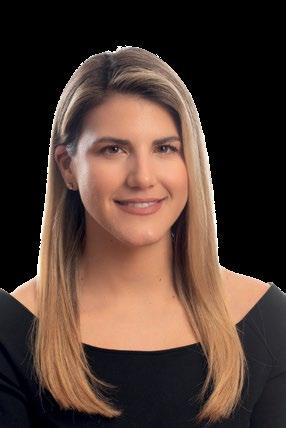

I have been working with the Company since 1996, which has given me 29 years of experience in shipping. My family background is closely tied to the industry; my father worked as a Mechanical Engineer on board various vessels. My brother followed in his footsteps and he is currently serving as a Superintendent Engineer ashore for LNG vessels.
I commenced my professional journey working in the Marine Operations Department and went on to gain more experience in various departments, including Freight Collection. Later, I transitioned to the Chartering Department, where I was responsible for preparing working copies of charter parties, and coordinating with other departments in order to ensure the smooth conclusion of voyages/fixtures.
Since 2007 I have been working with the Bunkering Department as a Purchasing Officer. My main responsibilities are coordinating the procurement bunker fuel for the Company’s fleet, ensuring that the Company secures the best quality fuels at the most competitive prices by evaluating our suppliers and monitoring market trends, while adhering to regulatory and environmental standards.
Despite the challenges, I view my job as a chance to learn something new every day. However, it is not just about the job itself but also about the people - you, who are on board the ships, far from your loved ones, working tirelessly and facing numerous challenges on a daily basis. It is our duty to support you in resolving any issues you may encounter, particularly in the area of fuel management. Being part of the maritime industry is both interesting and unique. I feel that having been a member of this family for so many years, and having the opportunity to contribute to its growth and development has been incredibly rewarding for me.
My journey in the maritime industry began in Dubai in the early 2010s, when I initially traded bunkers before specializing in physical bunker supply sales and oil cargo trading. Coming from a family closely involved in trade, I developed a passion for negotiating and interacting with people from diverse backgrounds.
In 2019, I seized the opportunity to move back to Athens and join the Company in the Bunkering Department, “fueling” the needs of the Company’s fleet. With a solid background in trading and procurement, combined with knowledge around market analysis and physical operations, I am dedicated to optimizing supplies and reducing costs. An integral aspect of my work is monitoring and evaluating the performance and reliability of our counterparties in terms of quality and services.
Recently, I have also taken on the responsibility for procuring EU Emissions Allowances for the Company to ensure compliance and minimize the financial impact of the new regulations.
I am proud to have contributed to the steady growth and continued success of the Company. I have the privilege to be in a professional space where I am given the opportunity to fulfil and grow my passion for shipping as well as form strong bonds and connections with talented, like-minded individuals that work collectively towards achieving the highest quality results in the industry. After all, individually we are just one drop, but together we are an ocean.
ELENA KOKKINOU
Hello everyone!
My name is Elena and I have been a part of the Company for almost two years now serving as a Compliance Officer. My primary responsibility among others is to ensure that our fleet operations comply with sanctions, laws and regulations. I work closely with the Chartering, Marine Operations and Insurance Departments to check all details and make sure that our fleet operations are at all times legitimate.
My journey in the maritime industry began in 2019 after I completed my Bachelor's degree in International Relations and I decided to pursue a career in the field. Over the past five years I have gained valuable experience, and I have also completed a Master's Degree in Shipping Management, expanding my knowledge in the field.
Working in the maritime sector has been a unique opportunity to be part of a global industry that is vital to international trade and to collaborate with professionals from around the world. The dynamic nature of shipping ensures that no two days are the same, providing continuous learning and growth




opportunities. I am grateful to the Company for providing a supportive environment that has allowed me to develop my skills and advance my career and also to you, our Seafarers, for your unwavering dedication and hard work in keeping our operations efficient and successful.
My name is Stella, and I am a qualified lawyer in Greece. I have had the privilege of being a member of this Company for the past two years. My professional journey in the shipping industry commenced at an early age, where I served for many years as a lawyer with a reputable law firm that represented and advised Greek ship owners on a broad spectrum of shipping matters.
Currently, I am a member of the Compliance Department at the Company. My responsibilities include providing comprehensive advice on all aspects of international sanctions, as well as trade embargos and other related challenges. I continuously monitor and stay informed about any developments and changes in laws and regulations concerning sanctions and trade embargos to ensure that our vessels always operate in strict compliance with all applicable legislation. Additionally, my daily responsibilities include overseeing Due Diligence and Know Your Customer matters.
Navigating the complex waters of international regulations requires diligence, precision, and a keen understanding of the ever-evolving legal landscape. However, with this Company I always feel as if I have the wind at my back, guiding me through these challenges.
I am proud to say that being part of the Company feels like being part of a big family, and I am profoundly grateful for the supportive and dynamic environment I work in.
Wishing you all safe seas and looking forward to meeting each one of you in person in the near future.
Hello dearest readers,
My name is Mina Kotsaki and I have been with the Company for nearly 2 years now. My bachelor’s degree was focused on Shipping, and I pursued my master's degree in Accounting and Finance. My career path commenced almost 7 years ago in logistics and the transportation of goods.
It was a great honour to join the Company in order to assist in the formation of a new division, the Forwarding Department. My daily tasks are to consolidate consignments, monitor vessels' routes in order to plan supplies all over the world and ensure the safe and prompt delivery of critical equipment on board in the most effective and cost efficient way. My goal is to ensure that all transportation procedures of critical items run smoothly on a daily basis. This entails the timely delivery on board that results in the safe navigation and operation of our fleet.
Looking forward to meeting you in person and stay safe.
My name is Nikostrati-Christina Gerardi, known in the Company as NG.
Having graduated from the Law School of Athens and after my post-graduate degree in Maritime Law, I decided that my career does not belong to the courts of Justice but to the maritime sector.
My personal voyage within the maritime industry commenced in early October 2022, when I joined the Legal Department of our Company. Since June 2023, I have been part of the Insurance & Claims Department. My daily work routine mainly consists of:
Arranging ad hoc insurance covers for every vessel of our Fleet calling to and/ or transiting through Additional Premium High Risk Areas
Following-up crew medical cases, updating insurers and, ultimately, submitting relevant reimbursement requests
Scrutinizing documentation (policy covers, certificates, invoices etc.), monitoring correspondence and, generally, assisting the Head of the Department in a series of administrative matters
It is my pleasure and honour to cooperate with such an amazing group of people and to get in touch with our Seafarers, whom I hope to meet in-person someday in the future. I had the chance to get to know some of you during the Company’s 2023 Athens Forum and look forward to seeing you again or meeting you for the first time either ashore or on board.
Until then, my best wishes to all of you and your loved ones and – of course – safe seas always & forever!
Wishing you all safe seas and smooth sailing!

By Vaia Kyrodimou
This time I will surprise you with something slightly different! Issue 78 in December 2021 featured my first visit on board M/T Captain A. Stellatos. Now, I am thrilled to share with you my experience aboard M/T Yannis P.
Over the past four and a half years I have attended three tanker vessels. However, these occasions did not prepare me for what I experienced during my eight days on board. So, let me share my experience with you!
19/07/24: It was late evening when the vessel arrived at the anchorage in Trieste. Captain Nasos Spanellis and I embarked. I much prefer a vessel to be fully loaded. I feel more at ease than when a ship is in ballast condition.
The pre-mooring inspection was completed that night. I had no idea that someone would come on board and check if the vessel met the port requirements in order to be allowed to enter.
watch and navigation activities. I had the time to look carefully at the radars and ECDIS and understand how we identify other craft.
21/07/24: We shifted from the anchorage as another vessel had to take up our anchorage point to receive bunkers. I watched the heaving up of the anchor.
Captain Nasos and I commenced the ISM audit. We walked on deck, we visited the pump room, the engine room, the galley, pantry and we checked the filing and forms
22/07/24: We completed the ISM/ISPS audits.
23/07/24: We left the anchorage. I watched all the pre-departure tests. The Pilot came on board. I watched the procedure of making fast the tugs which assisted our mooring at the berth.
I had never realized how many mooring lines were needed for this! The mooring procedure is crucial and proper communication is vital. The manifolds were connected.
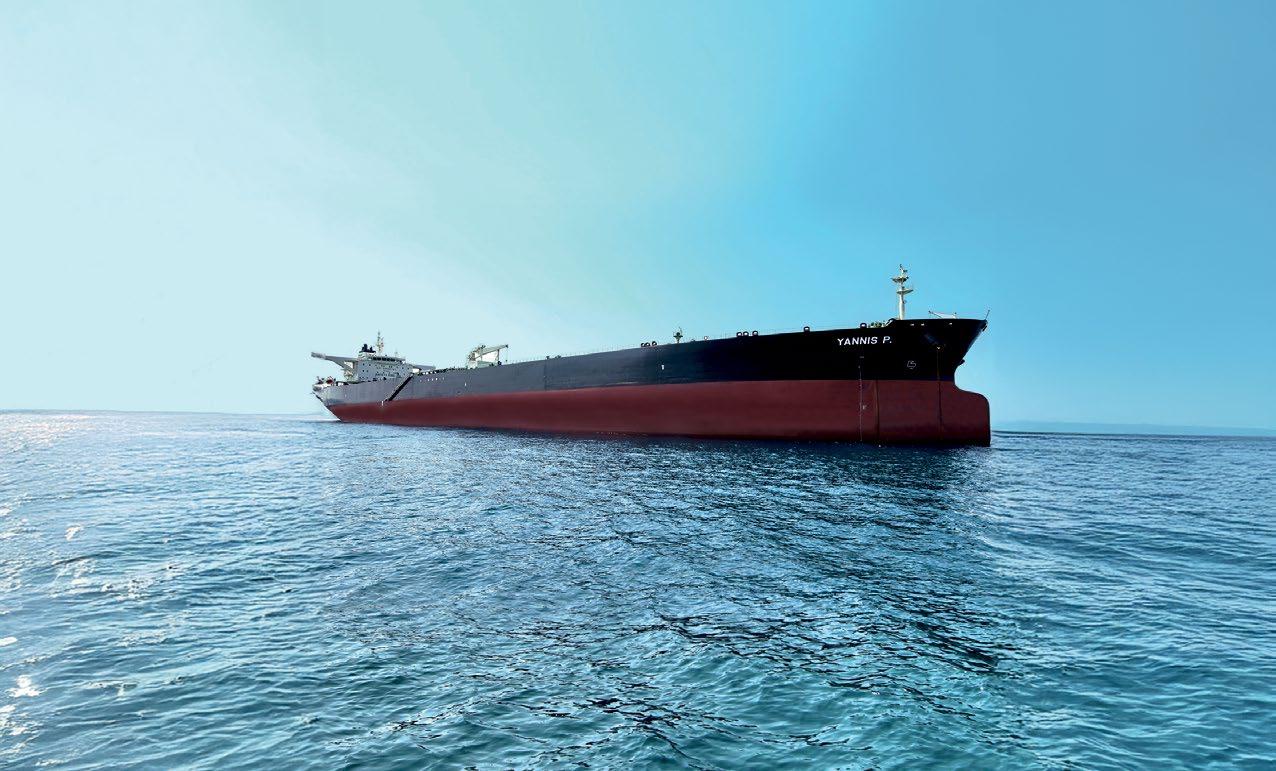
20/07/24: De-ballasting got under way as we were expecting to receive bunkers and we had to be in line with the draft limit in the port. The bunkering operation was carried out.
I was watching as they collected samples to keep on board, give to the barge and send to Fobas for analysis. I wasn’t familiar with this procedure.
3rd Officer (Mark Sombilon) familiarized the sign-on crew, Captain Nasos and myself, with the life- saving equipment. It was fascinating to see every piece safety equipment that I recognized from the manuals, its location on board and its use.
2nd Officer (Louie James Oteda) familiarized me with bridge
Visitors arrived on board. These were the Safety Officer, Discharging Operator, Port Customs and Vetting Inspector.
I observed the SIRE Inspection being conducted (which took about 10 hours). It was obviously my first observation and it made me realize how important the implementation of our SMS is.
24/07/24: The discharging operation, stripping, COW and ballasting were completed. The Pilot came on board and we left the port. I couldn’t have imagined how difficult night time navigation is. There aren’t any lights on the bridge and there are few lights on deck – just enough to be distinguished from other vessels at sea. The most crucial part of watch keeping is the monitoring of ECDIS and radars.
25/07/24: This was the least hectic day. We had a Safety meeting with crew (photo). The C/O was in the CCR to proceed with the purging procedure. The C/O and Captain Nasos explained to me what all the buttons in the Cargo Control room do.
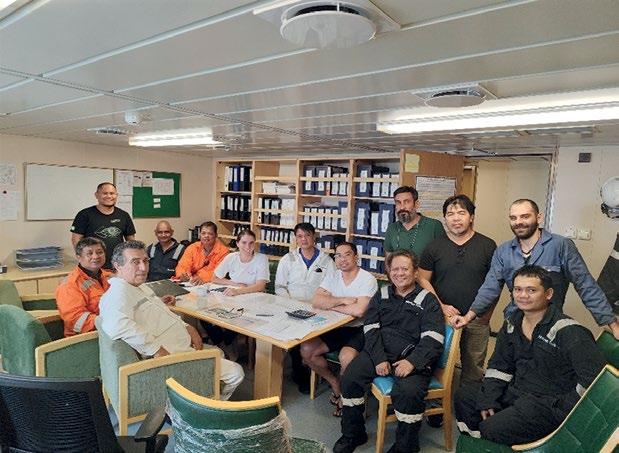
I was pleased to witness the fire in the galley and oil spill on deck drills which took place. I had never had such an opportunity before.
26/07/24: I woke up early in the morning to watch the arrival at Kalamata port. After eight days, I couldn’t wait to disembark. Even though I got a small taste of a seafarer’s life, I cannot really relate to the feelings of the crew who spend so many months on board.
I saw the sunrise as we arrived at the anchorage. I saw the ASD hoist the Greek flag, the red flag (which I was unfamiliar with, but learned gave notice of our dangerous cargo) and the yellow flag which meant that we were waiting to be checked / cleared.
I would like to congratulate the Chief Cook (Rachel Laogo) and
Assistant Cook (Armando Pollicar)! The food was amazing and they treated me very well.
My general feeling when I arrived on board was of disappointment because I didn’t know anything. There are so many different procedures, difficulties and potential problems. After these days on board I feel I came out wiser, with more knowledge and I collected some items that should change in the SMS. I had the opportunity to have face-to-face discussions with many crewmembers which I really enjoyed, even though my everyday job does not involve communicating with them.
These days were an eye-opening experience, as it is not easy for people who work ashore to understand the feeling of living and working in the same space with the same people for months on end. I would like to urge my colleagues to express their interest in taking the opportunity to experience sailing visits when the circumstances permit (loading/discharging ports, superintendent companion, free cabins). It is the best way to learn so many different things in such a short time. It gave me a bigger picture of the puzzle, and now I understand my job better. What I learned will enable me to do my job more efficiently as now I know much more about everything on board. I will try to assist our crew as much as I can. My appreciation and respect towards them grew immensely after this sailing visit.
Our Company gives this opportunity to employees like me who don’t normally attend vessels (for inspections, audits and other purposes) and it is extremely important that everyone should grab it if possible. I would like to thank from the bottom of my heart our Company and my manager, Ms Elli Moretti, for this opportunity. Furthermore, I would like to express my gratitude to Captain Vasilis Ergas (M/T Yannis P Master), the ship’s Crew and Captain Nasos Spanellis for their hospitality and support. This experience would not have been so meaningful, constructive and unique without all of them.

continued from page 18

MARIA MALEGOU
I am Maria Malegou, but many of you may know me as MGM
After getting a degree in Statistics and Economics, followed by an MSc in Marine Policy, I knew the shipping industry was where I belonged. With my father’s background in shipping, it felt like a natural fit.
I joined the Company in 1997, and having spent more than half of my life here It feels like yesterday that I first walked through the doors as an Assistant in the Technical Department. Soon after, I was entrusted with the Insurance Department, a responsibility that has shaped much of my career.
A few years later, I expanded my role and was also part of the Freight Collection Dept., balancing two demanding hats that, while challenging, keep me constantly learning and growing.
As Head of the Insurance Department my main focus is on ensuring all compulsory covers - Hull & Machinery (H&M), Protection & Indemnity (P&I), and War Risk are in place for the safe trading of our vessels. These covers are essential for the protection of both the crew and the vessel.
We also stay ahead of industry trends by adapting to new risks with ancillary insurance policies, always making sure that our crew and vessels are always protected.
It has been an absolute blessing to work alongside our crew whose dedication and hard work are unmatched and I am deeply grateful for a dynamic environment in the office. It is truly an honour to be part of such a committed team, working together to ensure the safety and success of our operations.

With its long history as a prominent trading port in the Far East, it comes as no surprise that Hong Kong also has a long history of ship registration. Indeed, the Hong Kong Shipping Register was established over 180 years ago in 1841. From that time until the 1990s, Hong Kong did not have its own fully independent registration system as ships had to be registered on the VK Register and were obliged to comply with the regulations of the British System.
This remained the case until 1997, when Hong Kong was handed back to China. However, preparations for the handover of the Registry began in 1986, when the Sino British Joint Liaison Group established the general principles by which the Hong Kong Shipping Registry would be operated. Furthermore, a steering group, which was set up a year later, laid down recommendations that would ensure that the Hong Kong Shipping Registry could maintain the highest of standards from 1997 onwards.
Between the 1960s and the mid-1970s the tonnage of ships registered in Hong Kong was well under 5 million, a barrier it broke through in the early 1980s. The tonnage then ranged from 5 million to 9.1 million until 1996. However, in 1997 the Hong Kong GRT fell due to a number of factors which were competently addressed by the Marine Department. The result was that the Hong Kong Registry attracted several major owners from the Greater China Region. There followed a meteoric increase in the size of the Hong Kong fleet from 6.4 million in 1999 to over 100 million GT in 2018!
According to UNCTAD, well over 2200 ships sail under the Hong Kong flag and the GT is around 200 million. As regards tonnage ownership, over 75% is accounted for by Chinese and Hong Kong (SAR) entities. Norwegian and Singaporean owners (3rd and 4th respectively) account for just over 7% of the tonnage between them. This tonnage makes Hong Kong the 4th largest in the world. In addition, the Register conforms to the highest standards and appears constantly on the Paris MoU and Tokyo MoU white lists. Its vessels are also in full compliance with the USCG Qualship 21 eligibility criteria.
With a population of over 7.4 million and an area of 430.25 square miles (1,114 sq.km), Hong Kong SAR is one of the most densely populated territories in the world. The main urban areas are on Hong Kong Island and Kowloon Peninsula, with a high proportion of the population concentrated around Victoria Harbour living on a substantial amount of reclaimed land.
As might be expected, Hong Kong is heavily dependent on the importation of raw materials, consumer goods, fuel and capital goods. On the other hand, Hong Kong has made great strides in manufacturing shipping and as a regional financial centre, a services sector that accounts for 80% of its GDP.
Hong Kong has only 6% of its land available for agriculture, on which vegetables like sweet potatoes and yams, fruit, rice along with sugarcane are grown. Flowers are also cultivated in the territory, while pond fish farming activities occur on about 2% of
the area. Additionally, there is some livestock like pigs and chickens. As for fishing offshore, its industry predominantly depends on fish caught in adjacent waters and its developing marine fish culture.
Apart from the disproportionately large number of films produced in Hong Kong, Chinese regional operas, puppet shows, ballet and theatre together with music performances and painting exhibitions contribute to Hong Kong’s cultural richness. Indeed, the Hong Kong Arts Festival is one of Asia’s major cultural events.

In addition to cultural offerings, Hong Kong can provide visitors with other experiences. In the New Territories, the Kadoorie Farm and Botanical Gardens visitors can see important local species such as leopard cats, muntjac deer, parrots and birds of prey. Alternatively a visit to the Taitong Organic Ecopark provides an opportunity to pick produce in the form of vegetables, fruit and edible flowers.
As regards islands, Lantau Island at 57 sq. miles (147 sq. km) with a population of 105,000 has marvelous beaches and trail paths that are popular with hikers and trail runners. Additionally, Lamma Island at 5.2 sq. miles (13.5 sq. km) in area has natural scenery that can be admired by hikers. For those with an interest in ancient history, there are Bronze Age rock carvings, and for those who love water sports like kite surfing there is a smaller island called Cheung Chau.
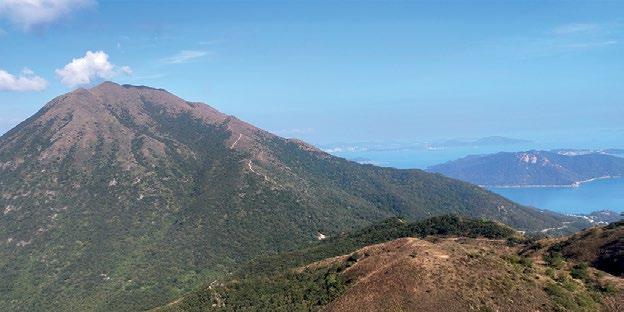
Although the images associated with Hong Kong are primarily those of densely populated urban areas, nature plays a major role in the territory. This is exemplified by the Hong Kong orchid tree whose scientific name (bauhinia x blakeana) honours the memory of a former governor of Hong Kong, Sir Henry Blake. An emblem of the flower appears on the flag, which illustrates the importance of flora to the population.
Sources: www.mardep.gov.hk, www.britannica.com, www.hketosin.gov.hk, www.discoverhongkong.com, www.studocu.com, www.tripadvisor.com, www.unctad.org
Ernest Shackleton was born on 15th February 1874 in Kilkea, Ireland. At the age of six, he moved to Dublin, where his father studied at Trinity College. Then, four years later, Ernest’s father moved the family to a London suburb to improve his employment prospects. In his early years, Ernest was schooled by a governess. He enjoyed reading and the books he read sowed the seeds of adventure in him. When he was eleven, he went to school in Dulwich for two years before enrolling at Dulwich College. He was by no means an outstanding student as he was not inspired by his studies at all.
He left school at 16, when he gained employment with the North Western Shipping Company. After four years of learning his trade and travelling widely, Ernest Shackleton passed his exam for 2nd Mate. He then accepted a position as 3rd Officer aboard a tramp steamer owned by the Welsh Shore Line. Eventually, he obtained his 1st Mate’s ticket and in 1898, he became certified as a Master Mariner. Following a short period working aboard the Union Castle Line’s passenger vessels, he transferred to the troopship, the Tintagel Castle. In 1900, he met Cedric Longstaff, whose father was the main financial backer of the British National Antarctic Expedition.
It was this connection that led to him being given an interview for a place on an expedition to be commanded by Robert Falcon Scott. He made a favourable impression, so on 17th February 1901, he was appointed 3rd Officer on the Discovery, and on 4th June of the same year, he became a sublieutenant in the Royal Naval Reserve. During this expedition, Ernest Shackleton accompanied Scott and Edward Wilson on a sledge journey over the Ross Ice Shelf when the Discovery could no longer proceed because of ice. Shortly afterwards, in March 1903, Shackleton was sent home aboard a supply ship due to poor health.

Shackleton in 1901, aged 27.
Source: en.wikipedia.org

Source: en.wikipedia.org
Eventually, on 27th October 1915, the pressure on the hull of the trapped ship became so great that the keel and rudder were torn off, the stern lifted and there was a massive water ingress. The order was given to abandon ship and launch the lifeboats. All the crew escaped unharmed, the Endurance sank and remained unseen below the waves until 2022, when she was located by a team of marine archaeologists.
Following the loss of the vessel, an initial plan to march across the ice towards land was quickly abandoned because progress was painfully slow (7½ miles (12 km) in 10 days). Instead, they were forced to trust drifting ice floes to get them to land, which materialised on 7th April 1916. On that date they set foot on dry land for the first time since they had left South Georgia. Although they had reached Elephant Island, they were still not out of the woods. So, after nine days of recuperating and preparing, Shackleton, Captain Worsley and four others set out to seek assistance from a whaling station on South Georgia in a lifeboat (James Caird).
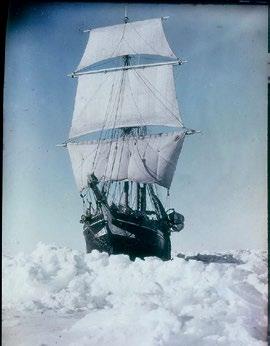
Endurance under steam and sail trying to break through pack ice.
Shackleton returned to the Antarctic five years later. On this occasion, he was the leader of a British Antarctic Expedition aboard the Nimrod. Forced to spend the winter on Ross Island, Shackleton took a sledging party to within 112 miles (180 km) of the South Pole. During the journey, the Victoria Land Plateau was claimed for the Crown. The party returned in late February 1909 only to find that Nimrod had just left. In order to alert those on board of their return, he signalled by setting fire to the camp. Fortunately, the ship went back and the sledging party was back on board. In England, Shackleton was knighted and made Commander of the Royal Victorian Order.
Source: en.wikipedia.org
After battling rough seas for 16 days, the six made it to shore on the other side of the island to the whaling station. Shackleton led two men on foot to the station at Stromness, where the station manager was visibly shocked by their sudden appearance in such a remote location. Shackleton received assistance, picked up the three others on the other side of South Georgia, procured a ship called the Yelcho from Chile and rescued the remaining 22 men on Elephant Island, where hope was beginning to fade 128 days after the rescue party had left aboard the James Caird. Not one person aboard the Endurance was left behind, but three did not survive the return journey.
Sir Ernest Shackleton’s British Imperial Trans-Atlantic Expedition departed in August 1914. The explorer’s aim was to cross Antarctica from a base on the Weddell Sea to McMurdo Sound via the South Pole. His ship, the Endurance, left South Georgia for Antarctica on 5th December 1914. Two days after the departure, the Endurance carrying 27 men (plus one stowaway who became the ship’s steward), 69 dogs and a cat, encountered pack ice, which considerably slowed progress. Then, on 18th January, a northerly gale struck. The pack ice was pushed up hard against land and ice floes were pressed tight against each other. The Endurance was well and truly at the mercy of the ice and was carried away from her destination.
Sir Ernest Shackleton served in the British Army towards the end of World War I, at the end of which he prepared for a 4th Antarctic Expedition. This preparation involved a fund-raising campaign for the Shackleton-Rowett Expedition, which took a toll on the Irish explorer. The goal of the ‘venture’ was to circumnavigate the Antarctic aboard the Quest in 1922. Unfortunately, Sir Ernest Shackleton suffered a major heart attack in his bunk in Grytviken, South Georgia on 5th January 1922. His death was put down to the strain of preparing for his 4th expedition as well as the exertions of the previous ones.
There can be little doubt that Ernest Shackleton was the greatest Irish explorer of his time. His incredible third expedition and his association with the Endurance have cemented his place in history as a ‘Pioneer of the Waves’.
Source: www.britannica.com, www.history.com, en.wikipedia.orgcom. www. commonswikimedia.org
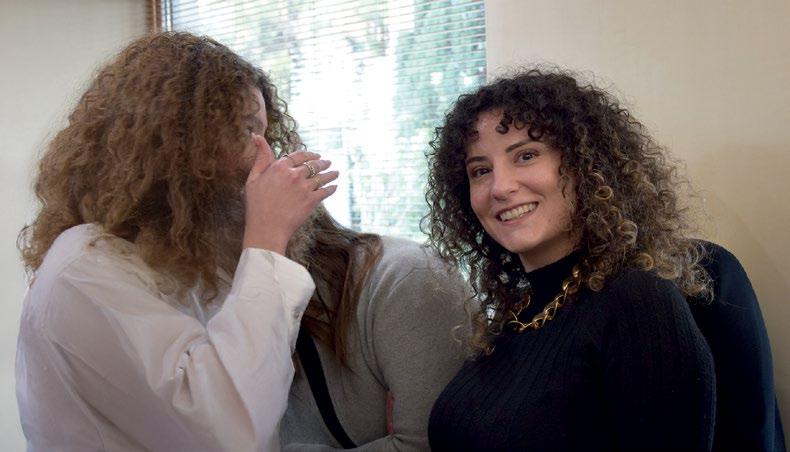
1. Make the names of three Company vessels using all the letters in the following sentence: MA BEAR RAN TO BUM NAILS.

See if you can spot who is the least and most camera shy in the photo. Choose from persons A,B,C or D. (Sorry, there are no prizes for answering correctly.)
2. The letters in the chemical symbols for germanium, gold, iodine, neon and phosphorus can be rearranged to form the name of a Company vessel. What is the name of the vessel?
than Copenhagen. As for wild animals, Juan prefers leopards and hyenas to crocodiles and anacondas. He also likes ravens but not jackdaws. Lastly, he’d rather have Gouda than Cheddar. By the same token which fruit would he prefer: jackfruit or grapefruit?
6. Which five-letter word can be placed after the words to the left and before the words to the right?
3. You should always take me: that you should know. In fact, I can be found on your logo. I go with something you should be all the time. And with that something I do rhyme. What am I?
4. Which three-letter word can be used to complete the following words: C _ _ _ ED, SP _ _ _ ER, TURM _ _ _ and B _ _ _ ING?
5. 5. Juan likes the states of Florida and Wyoming but not Kentucky or Oregon. He likes Prague much more
7. In 4 steps change the word WENT to CAME by changing one letter at a time to form intermediate words.
8. What is the missing number (X) in this sequence?
1. What do the inventors of Morse Code and the Plimsoll Line have in common?
A. first name B. date of birth
C. place of birth D. university attended
2. The top three registries of Panama, Liberia and the Marshall Islands account for what approximate percentage of the entire world fleet by DWT?
A. 35 B. 40 C. 45 D. 50
3. What was the name of Ferdinand Magellan’s flagship?
A. Victory B. Beagle C. Terror D. Trinidad
4. As of 1st July 2024, how many of the Company vessels’ names contain 8 letters?
A. 4 B. 5 C. 6 D. 7
5. Which of the following is a greenhouse gas included in the “Well-to-Wake” approach to assessing lifecycle
greenhouse gas (GHG) emissions from marine fuels?
A. carbon monoxide B. hydrogen sulphide
C. nitrous oxide D. sulphur dioxide
6. The word ‘vindaloo’ from the Indian dish ‘lamb vindaloo’ originates from a description of the meat being marinaded. From which language does the word originate?
A. Spanish B. Dutch C. Portuguese D. French
7. Which of the following is the oldest port?
A. Piraeus, Greece B. Cadiz, Spain
C. Lothal, India
D. Alexandria, Egypt
8. What is the nationality of the current Secretary General of the IMO?
A. Greek B. South Korean
C. Japanese D. Panamanian
Answers at the foot of the page Answers at the foot of the page

Brad Cavanagh years after his ordeal
Source:www.distractify.com


Deborah Kiley
Source:en.wikipedia.org
In October 1982 a group of five people boarded a 58-foot (18m) Alden sailing yacht called Trashman in Maine USA. Their destination was Florida and the purpose of this six-day, 1250mile (2000km) trip was to deliver the yacht to a place where sailing conditions were more favourable during the winter season.
The individuals on board were Captain John Lippoth, Meg Mooney, Brad Cavanagh, Mark Adams and Deborah Kiley. At 27 and 32 the Captain and Ms. Mooney respectively were the oldest members of the crew. They were in a relationship. On the contrary, Brad Cavanagh, who was 21, was the youngest and least experienced. He knew Mark Adams, who was in his mid-20s, as they had been occasional sailing partners. Last, but certainly not least, Deborah Kiley at the age of 24 was probably the most famous sailor. A year earlier with a wealth of experience crewing yachts, she became the first American woman to complete the Whitbread Round the World Race over a course of 27,500 nautical miles (50,000km).
As the yacht departed Maine, conditions were ideal and the weather reports had made no mention of inclement weather. As a result, some on board, especially Captain Lippoth began to drink some alcoholic beverages. Their mood was relaxed until the second day, when all of a sudden a tropical storm formed off Cape Fear in the Carolinas. Massive waves of 30 feet (9m) in height accompanied by 70 mph (110 kph) winds began to toss the boat about. At first, the five on board were in shock but as the pattern of the storm became more predictable, they believed that they could ride it out.
Unfortunately, they were wrong. At one point, as the yacht rose to move over another massive wave, she tilted so fast that righting herself was impossible. The dark Atlantic waters came flooding into the yacht, leaving no doubt that abandoning the vessel was the only course of action available. Consequently, five people suddenly found themselves on a tiny life raft in the ocean without food, water or any useful equipment. To make matters worse, North Carolina is home to an abundance of marine life, including apex predators like the tiger shark. It was not long after they had scrambled on to the life raft that sharks began circling it. Perhaps they had been attracted by blood coming from a large gash on Meg Mooney’s leg, or maybe the thrashing about in the water had brought the sharks in. Whichever the case, it was obvious why these fearsome creatures were in the vicinity. Indeed, they soon showed their

The only rescue photo of Deborah Kiley and Brad Cavanagh after their horrific five days adrift
Source:www.explorersweb.com
intent by nudging the raft. In an attempt to stabilize the tiny vessel, Cavanagh and Kiley put a piece of plywood attached to wire into the water. This only served to antagonize one shark which grabbed the apparatus and began the pull the tiny raft along. Shortly afterwards the sharks dispersed, but they did not stay away for long.
By day 3 the crew were becoming dehydrated. This was particularly evident in the case of Captain Lippoth, whose consumption of diuretic beverages was exacerbating his condition. Adams was also suffering and the two began to drink from the Atlantic, making their dehydration even worse. They became delirious. Lippoth, who was hallucinating, claimed he had spotted land. Without hesitation, he dived into the water believing that he was swimming to safety. Within seconds the sharks attacked. He managed to let out a scream before he disappeared. Then Adams began rambling incoherently about buying beer and cigarettes. He also left the raft and met the same fate as Lippoth.
In the meantime, the condition of Mooney’s leg wound was deteriorating rapidly. Cavanagh and Kiley could do nothing to assist her, and when they woke up the next morning they discovered that she had passed away. The two survivors said a prayer and pushed her body into the water, leaving potentially infectious fluids on the raft. Fearing infection, they tried to clean up the fluids. While doing so, Cavanagh fell into the sea. He struggled to get back on the raft. Kiley tried to help him up, but she was too weak. At one point, they spotted a cargo vessel in the distance, which gave Cavanagh the boost needed to drag himself aboard.
On the fifth day, Brand Cavanagh and Deborah Kiley were rescued by a Russian Cargo vessel. They were taken aboard 175 miles (140km) south of Cape Lookout, and taken to safety. Their ordeal changed their lives. Kiley had difficulty sleeping due to recurring nightmares of two of her crew mates screaming in the water. She abandoned her previous life at sea, but she was able to work as a motivational speaker. She also wrote two books about her experience and appeared on Discovery Channel’s ‘I Shouldn’t Be Alive’ with Brad Cavanagh in 2005. Deborah Kiley died in Mexico at the age of 54 after her son had drowned when he was 23. Conversely, Brad Cavanagh returned to the ocean to pursue his career as a professional yachtsman. He now lives in Massachusetts with his wife.
Sources: www.explorersweb.com, www.en.wikipedia.org, www.bostonmagazine.com www.newsweek.com, www.news.com.au